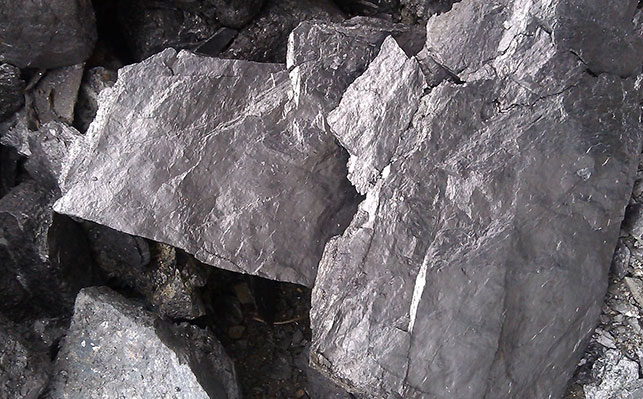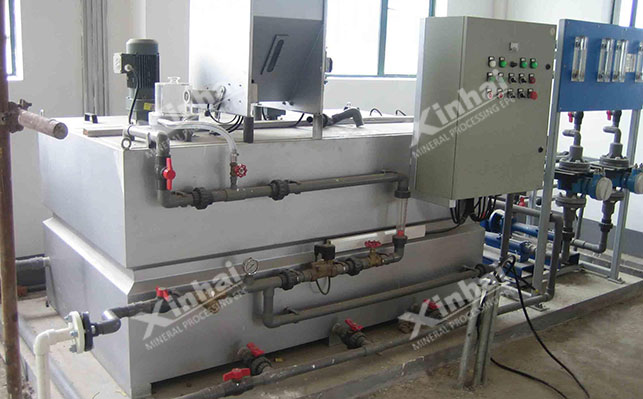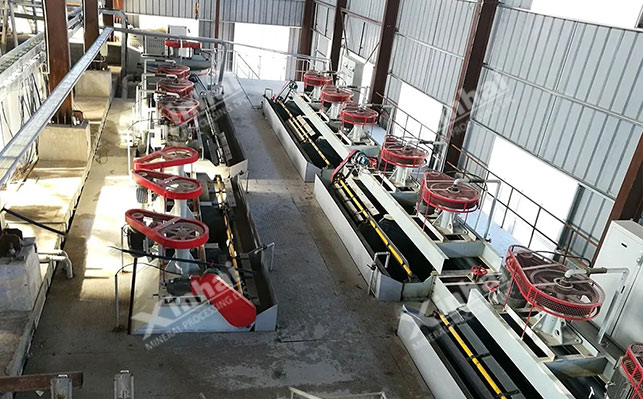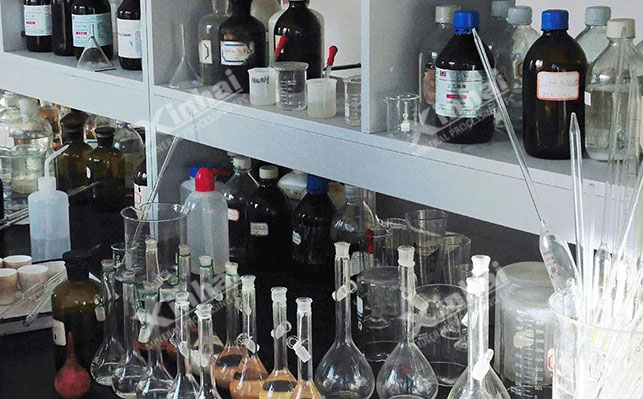
15311826613
Click to add WeChatGraphite ore is often accompanied by quartz, illite, kaolinite, andalusite, sericite and a small amount of pyrite, limonite, tourmaline, calcite, etc., which must be purified and removed before it can be used. Common graphite Purification methods include Selective flocculation method, Flotation method, Alkaline acid method, Acid leaching method, chlorination roasting methodandhigh temperature roasting method.

The purification of graphite ore by selective flocculation method requires a suspension containing two or more components. , adding polymer flocculant, so that the flocculant can selectively adsorb certain components in the suspension, and produce flocculation and precipitation through bridge chain action, thereby achieving the purpose of component separation.

The main flocculants are sodium silicate, sodium hexametaphosphate, lignin starch, carboxymethylcellulose and water glass as dispersants. Tapioca flour, acorn flour, sodium alginate, and polyacrylamide are used as flocculants to purify graphite ore.
The selective flocculation purification method and equipment of graphite ore are relatively simple and low-cost, but the fixed carbon recovery rate is low, only about 40%.
Flotation is a common method for purifying graphite ore. It mainly enriches selected materials at the gas-liquid interface by adding a series of flotation reagents. The target minerals are separated from impurity minerals to achieve the purpose of purification.
Graphite itself has good natural floatability and hydrophobicity, so conventional graphite ore can be purified by flotation process. In the purification process, in order to protect the large scales of graphite, the process generally adopts multi-stage grinding, multiple separations, and coarse concentrate regrinding and then separation.

The collector commonly used in graphite ore flotation method is mostly coal tar, the foaming agent is mostly pine alcohol oil or butyl ether oil, and there are many inhibitors. Use water glass and sodium fluorosilicate.
The purification of graphite ore flotation can make the graphite grade reach 80%~90%, or even about 95%, and this method has low chemical consumption, low energy consumption and low cost. However, when graphite ore contains extremely fine silicate minerals and compounds of potassium, calcium, sodium, magnesium, aluminum and other elements, the monomer dissociation cannot be achieved during the grinding stage, and other processes must be used to purify again after flotation. .
Acid-alkali method for purifying graphite ore is a relatively mature process at present, which can be divided into two processes: alkali fusion and acid leaching. Among them, the alkali fusion process is a chemical reaction between alkali in the molten state and acidic impurities (silicate, aluminosilicate, quartz) in graphite under high temperature conditions to generate soluble salts, and then Impurities are removed by washing; the acid leaching process uses acid to react with metal oxide impurities to convert some of the unreacted impurities in the alkali fusion process into soluble salts, and then removes the impurities through washing. It is separated from graphite to improve graphite purity.
The alkali-acid purification of graphite ore can make the graphite grade reach 99.5%, with simple equipment, low energy consumption and small one-time investment. However, the acid and alkali in this method will be highly corrosive to the equipment, and the purified wastewater will be seriously polluted. In addition, there is also the disadvantage of graphite loss.

The acid leaching method for purifying graphite ore can include sulfuric acid, hydrochloric acid, nitric acid, hydrofluoric acid, etc. method. Among them, sulfuric acid and hydrochloric acid are more suitable as leaching acids and have strong leaching ability, but some sulfates have low solubility, while hydrochloric acid is more expensive; nitric acid is highly oxidizing and volatile, and is easy to decompose when exposed to light and easily produces highly toxic phosgene. It is easy to explode at high temperatures; hydrofluoric acid cannot undergo oxidation reactions or reduction reactions. The key point is that it can effectively dissolve SiO2 and silicate. After graphite and hydrofluoric acid are fully mixed, hydrofluoric acid will react with impurities in the graphite. The reaction produces water-soluble compounds and volatiles, and then the soluble impurities are removed by water washing to obtain high-purity graphite. The hydrofluoric acid purification of graphite ore can effectively remove impurities in the mineral and has low energy consumption. However, this method is highly toxic and causes serious environmental pollution.
The chlorinated roasting method to purify graphite ore mainly involves adding an appropriate amount of reducing agent to the graphite ore, and then heating it under a specific atmosphere and equipment. After high-temperature roasting, the valuable metals in the minerals are combined with chlorine and transformed into gas phase or condensed phase metal chlorides with low melting and boiling points, thereby precipitating and effectively separating from other components to obtain high-purity graphite. The chloride roasting method for purifying graphite ore has high efficiency, low energy consumption and low cost. However, chlorine gas in this method is highly corrosive and toxic, causing greater environmental pollution.
The melting point of graphite ore is very high (melting point is 3652°C, boiling point is 4250°C), which is much higher than other impurity minerals. The high-temperature roasting method for purifying graphite uses the difference in melting point of graphite to sort the graphite ore. The graphite ore is heated to 2700~3000°C. Most of the impurities have been vaporized, so the graphite can be effectively separated from the impurities. The high-temperature roasting method for purifying graphite ore can reach a grade of 99.99% or even higher, but it consumes a lot of energy, requires very high equipment, and has certain requirements for the purity of raw graphite ore.
The above is an introduction to the six graphite ore beneficiation and purification methods. In the actual dressing plant, which solution to choose depends on the properties of the graphite ore. Through experimental analysis, not only the properties of the graphite ore can be determined, but also the properties of the graphite ore can be determined. A suitable graphite beneficiation and purification process and a complete set of graphite beneficiation equipment can be designed based on the analysis results. Xinhai Mining can provide services throughout the mining industry chain. If you have any needs, please feel free to consult us.